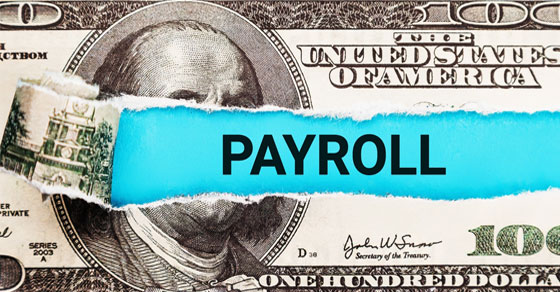Payroll is one of the biggest costs for most small to midsize employers. If this holds true for your organization, you may be looking at the year ahead with some measure of uncertainty.
The Trump administration has stated that its priorities include using tariffs and strict immigration policies to accomplish its objectives. We don’t yet know how this approach will affect big-picture issues such as inflation and the labor market in the short term — particularly in some industries. However, there are likely to be implications. Here are six ways to address payroll costs as we all await further developments:
- Conduct a payroll audit. If your organization has been operational for a while, you may have a relatively complex compensation structure and payroll system. By meticulously evaluating the related expenditures under a formal audit, you may be able to identify flexible or nonessential costs. These costs represent potential money-saving opportunities to be seized upon without drastically altering your existing structure and system.
- Optimize how you use and classify workers. A long-standing risk for many employers is misclassifying employees as independent contractors. If anything, this risk has only grown as “gig workers” remain popular in various industries. So, first and foremost, review employee classification throughout your organization to verify that you’re not at risk for compliance penalties. From there, look at every position and consider whether it could or should be converted to a part-time role or contractual arrangement without adversely affecting productivity and efficiency.
- Ensure you’re not overlooking payroll-related tax breaks. Your organization may be eligible for tax credits or incentives now, or you could shift your employment strategy to qualify for them. For example, if you need to expand your workforce later this year, the Work Opportunity Tax Credit potentially offers a dollar-for-dollar reduction in your tax liability for hiring individuals from certain target groups. There may also be state and local tax relief programs available. Identifying and claiming every tax break you’re eligible for can reduce payroll costs and improve cash flow.
- Explore strategic compensation adjustments. When payroll costs become problematic, many employers want to immediately jump to drastic steps such as layoffs or cuts to salaries or wages. However, these may devastate employee morale and hamper hiring in the future. Explore the feasibility of more measured adjustments, such as:
- Reducing work hours for some employees,
- Suspending employer matches for your qualified retirement plan,
- Transitioning from fixed bonuses to performance-based incentives, and
- Entering into deferred compensation agreements with highly compensated employees or other key staff.
These or other actions can reduce immediate payroll costs without radically changing your compensation philosophy and program.
- Consider technological improvements. Another good reason to undertake the aforementioned payroll audit is it might reveal financial losses attributable to compliance penalties, overpayments, or unnecessary or redundant administrative costs. Although there’s no guarantee better technology will solve such problems, enhanced automation and functionality tend to reduce human errors, eliminate redundancies and facilitate real-time monitoring that can catch minor inaccuracies before they turn into major crises.
- Work with your professional advisors. Employers generally need to take a nimbler approach to payroll management, hiring and other operational functions during times of economic uncertainty. Obviously, you and your leadership team should keep an eye on the news, but your professional advisors can provide invaluable insights into their various areas of expertise. Please contact us for tailored guidance on cost management, tax optimization and regulatory compliance to ensure your payroll decisions support long-term sustainability.
© 2025
